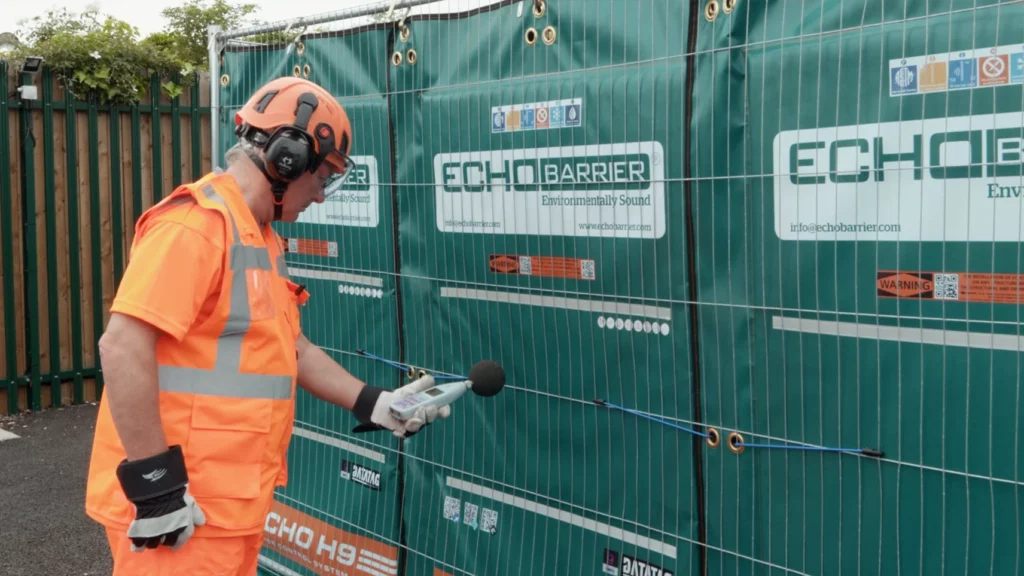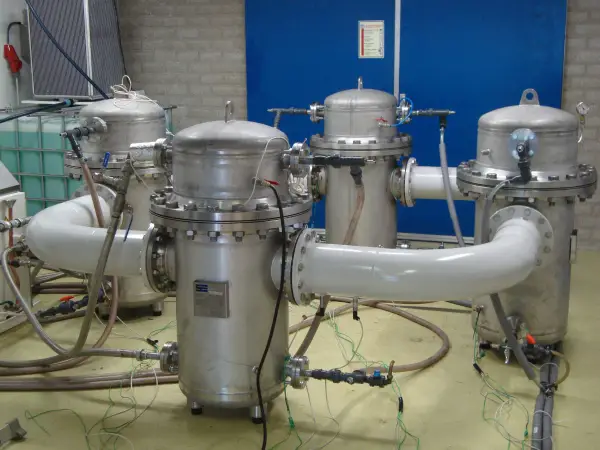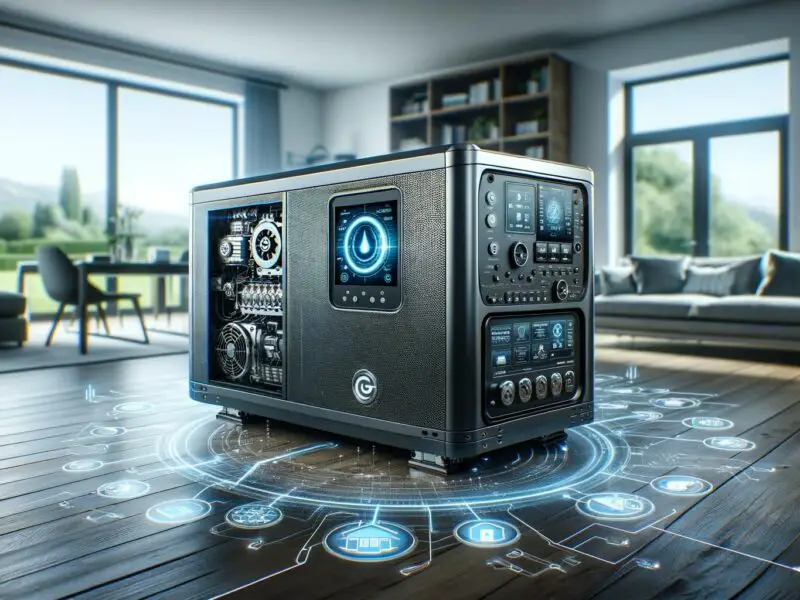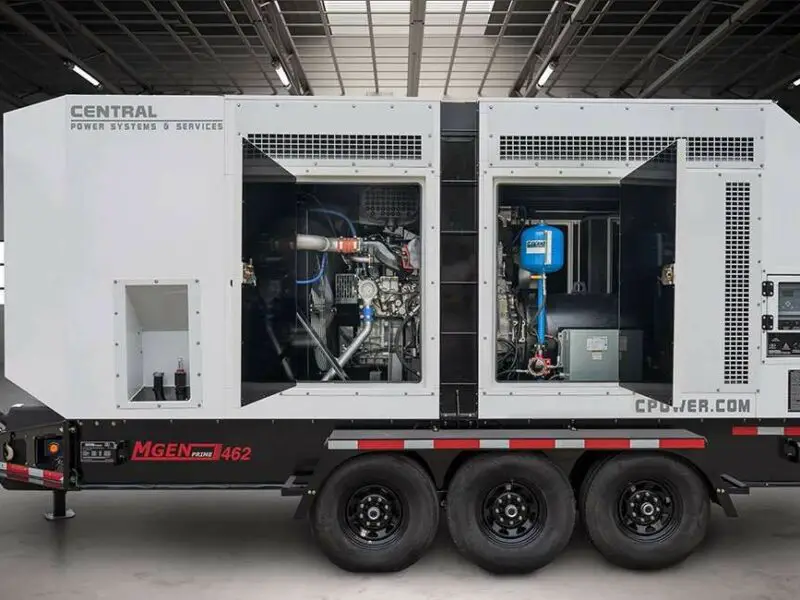
- Reducing noise inside the generator enclosure
- Installing a standby generator
- Other ordinances affecting standby generators
- Tips when comparing portable generators
- Consider the decibel rating (dB) provided by manufacturers as an indicator of the unit’s noise level.
- Look for portable generators equipped with features like sound mufflers or low-noise engines for quieter operation.
- Check if the manufacturer provides information on how far away from the unit one should be to meet acceptable sound levels.
- Noice level and regulations explained
- Strategies for reducing generator set noise
- Conclusion
- FAQs
- FAQ 1: Can generator noise cause any health issues?
- FAQ 2: How can I reduce generator noise?
- FAQ 3: Are there any regulations regarding generator noise compliance?
- FAQ 4: What should I do if my generator exceeds permissible noise limits?
- FAQ 5: Can I be fined for non-compliance with generator noise regulations?
- FAQ 6: How can I measure the noise level of my generator?
- FAQ 7: Are there any benefits to using quieter generators?
Generator noise compliance is a crucial consideration for both residential and commercial settings, especially when it comes to sound level and attenuation. The engine combustion and exhaust systems of generators can contribute significantly to the overall noise level. However, with the proper set up, this noise can be minimized. Vibrations from the generator’s moving parts further amplify the noise emitted. Cooling fans and air intake systems can generate additional noise, adding to the overall decibel levels produced by the generator set.
Ensuring generator noise compliance is essential for maintaining a peaceful environment and adhering to local regulations. It is important to set the generator noise level within acceptable limits. Excessive noise from industrial generators can disturb neighbors, disrupt daily activities, and even lead to legal consequences. It is important to choose reliable generator manufacturers when selecting generator sets to avoid noise-related issues. By implementing these measures, such as using generator sets, you can enjoy the benefits of a reliable power source without causing unnecessary disturbances, such as airborne noise.
Reducing noise inside the generator enclosure
The generator enclosure plays a crucial role in minimizing noise levels emitted by the generator set. By implementing certain measures, you can effectively reduce noise within the enclosure of generator sets and create a quieter environment. Let’s explore some key strategies for achieving noise compliance.
Soundproofing Materials: Acoustic Foam
One effective way to minimize noise within the generator enclosure is by using a set of soundproofing materials, such as acoustic foam. Acoustic foam is designed to absorb and dampen sound waves, reducing their intensity and preventing airborne noise from escaping the enclosure. By lining the walls of the enclosure with acoustic foam panels, you can significantly attenuate noise levels produced by the generator set.
Vibration Isolators for Reduced Vibrations
In addition to soundproofing materials, installing vibration isolators can help reduce vibrations and subsequent noise levels generated by the generator set engine. Vibration isolators are specially designed mounts that provide a cushion between the generator set engine and its surroundings, absorbing vibrations and preventing them from being transmitted as noise. These mounts effectively isolate the generator set from its supporting structure, resulting in reduced overall noise output.
Proper Ventilation Design for Efficient Cooling
Proper ventilation design is essential not only for efficient cooling of the generator but also for minimizing excessive noise. When designing an enclosure for a generator set, it’s crucial to ensure adequate airflow while considering both acoustic considerations and minimizing airborne noise. By incorporating ventilation systems that allow sufficient air exchange without compromising on sound attenuation, you can strike a balance between cooling requirements and noise control in generator sets.
To achieve this balance, specialized acoustic vents or silencers can be used to control airflow while reducing ambient noise levels in a generator set. These generator set components are designed to attenuate sound transmission through their unique construction or use of sound-absorbing materials.
Compliance with Noise Reduction Standards
When designing or selecting an enclosure for your generator set, it’s important to consider compliance with relevant noise reduction standards. Different regions may have specific regulations regarding acceptable decibel levels or other criteria that generators must meet. Ensuring compliance with these generator set standards is crucial to avoid potential penalties and maintain a harmonious relationship with the community.
By selecting standard generator set enclosures that are specifically designed for noise reduction, you can be confident in meeting the required noise control standards. These enclosures are engineered to provide effective sound attenuation while maintaining the necessary functionality of the generator set.
Installing a standby generator
Standby generators are essential for providing backup power during outages, ensuring that our homes or buildings remain functional and comfortable. However, the installation process is not as simple as plugging in a generator and turning it on. It requires professional expertise to ensure proper electrical connections and compliance with safety codes.
Professional Installation for Safety Compliance
Installing a standby generator should always be done by professionals who are knowledgeable about electrical systems and local regulations. They have the expertise to handle the complex wiring and ensure that everything is connected correctly. This not only guarantees the smooth operation of the generator but also ensures compliance with safety codes.
Choosing the Right Location
One crucial aspect of installing a standby generator is selecting an appropriate location. The placement of the generator plays a significant role in minimizing potential disturbances caused by noise. Here are some factors to consider when choosing where to install your standby generator:
- Distance from Living Areas: Place the generator far enough away from living areas to minimize noise disruption inside your home or building.
- Proximity to Neighbors: Consider your neighbors’ proximity when determining where to install the generator. You want to avoid causing unnecessary disturbance, so choose a location that minimizes noise impact on neighboring properties.
- Obstructions: Ensure that there are no obstructions such as walls, fences, or trees that could impede airflow around the generator or block access for maintenance purposes.
- Ventilation: Proper ventilation is crucial for safe operation. Install the standby generator in an area with adequate airflow to prevent overheating.
- Accessibility: Choose a location that allows easy access for maintenance and repairs without causing inconvenience or hazards.
Noise Reduction Measures
Generator noise can be disruptive, especially if you live in close proximity to neighbors or have strict noise regulations in your area. While it’s impossible to eliminate all noise completely, there are measures you can take to reduce it:
- Soundproof Enclosures: Consider installing a soundproof enclosure around the generator to help reduce noise levels. These enclosures are designed to absorb and dampen sound, minimizing its impact on the surrounding environment.
- Vibration Isolation Mounts: Use vibration isolation mounts to reduce the transmission of noise and vibrations from the generator to nearby structures. These mounts act as shock absorbers, minimizing the impact of generator vibrations.
- Regular Maintenance: Proper maintenance and servicing of your standby generator can help ensure it operates at optimal efficiency, reducing unnecessary noise caused by mechanical issues.
By following these guidelines for professional installation and choosing an appropriate location, you can minimize disturbances caused by generator noise while enjoying the benefits of backup power during outages.
Other ordinances affecting standby generators
Local Noise Ordinances
In addition to the considerations mentioned earlier, there are local regulations that may impose restrictions on the use of standby generators. These regulations often include permissible noise levels that must be adhered to in order to maintain a peaceful and quiet neighborhood. Each jurisdiction may have its own specific noise limits, so it is important to familiarize yourself with the local noise ordinances before installing a generator.
Permits and Zoning Requirements
Some areas require obtaining permits or meeting specific zoning requirements before installing a standby generator. These permits ensure that the installation complies with safety standards and does not cause any harm or inconvenience to neighboring properties. Zoning requirements help prevent issues such as improper placement or obstruction of access points.
Here are a few key points regarding permits and zoning requirements:
- Check with your local authorities to determine if you need a permit for installing a standby generator.
- Understand the zoning regulations in your area to ensure compliance with setback distances, property line restrictions, and other guidelines.
- Hiring a licensed electrician or generator installer can help navigate these permitting processes more efficiently.
Compliance with Emission Standards
In certain jurisdictions, compliance with emission standards might be necessary when operating standby generators. This ensures that the emissions from the generator do not negatively impact air quality or violate environmental regulations. It is crucial to understand and adhere to these emission standards to minimize any potential harm caused by the generator’s operation.
Here are some important considerations regarding compliance with emission standards:
- Familiarize yourself with the specific emission limits set by your local authorities.
- Regular maintenance of your standby generator can help ensure it operates within acceptable emission levels.
- Consult with professionals who specialize in generators to understand how best to meet emission standards while maximizing performance efficiency.
Understanding and abiding by these additional ordinances is essential for responsible ownership and operation of a standby generator. By doing so, you can avoid potential legal issues, maintain good relations with your neighbors, and contribute to a cleaner environment.
Tips when comparing portable generators
Consider the decibel rating (dB) provided by manufacturers as an indicator of the unit’s sound power and sound attenuation. Acoustic barriers can help in reducing sound energy.
One important factor to consider is the noise level. Nobody wants a generator that sounds like a jet engine taking off in their backyard, right? That’s where the decibel rating (dB) comes into play. Manufacturers often provide this information as a measure of how loud or quiet their generators are. The lower the dB rating, the quieter the generator will be.
Here are some tips to keep in mind when comparing decibel ratings:
- Look for generators with lower dB ratings, preferably below 60 dB. This ensures quieter operation and minimizes disturbance to your neighbors.
- Keep in mind that every 10 dB increase represents a doubling of sound intensity. So, a generator rated at 70 dB is twice as loud as one rated at 60 dB.
- Consider your specific needs and environment. If you plan to use the generator in a residential area or during nighttime camping trips, opt for models with even lower dB ratings for maximum peace and quiet.
Look for portable generators equipped with features like sound mufflers or low-noise engines from Cummins Power Generation for quieter operation. These generators are designed to reduce noise levels with the help of acoustic barriers and acoustic panels. Additionally, they are also energy-efficient, making them an excellent choice for those looking for a quieter and more environmentally friendly power solution.
To further reduce noise levels, many portable generators come equipped with additional features designed to minimize sound output. These features can make a significant difference.
Some key features to look out for include:
- Sound mufflers: These devices are specifically designed to reduce exhaust noise by redirecting and dampening sound waves. They act like silencers on cars and help keep things hushed.
- Low-noise engines: Some manufacturers design their engines with noise reduction in mind, using advanced technologies such as improved insulation and vibration dampening systems.
- Enclosures: Certain models come with built-in enclosures made from sound-absorbing materials that help contain and reduce noise levels.
By opting for generators with these features, you can enjoy a quieter operation while still benefiting from the convenience and reliability of portable power.
Check if the manufacturer provides information on how far away from the unit one should be to meet acceptable sound levels for ambient noise and airborne noise. It is also important to consider installing acoustic panels to reduce noise levels and comply with noise ordinance regulations.
Different locations may have specific regulations or guidelines regarding acceptable noise levels. To ensure compliance and avoid any potential issues, it’s essential to check if the generator’s manufacturer provides information on recommended distances for meeting acceptable sound levels.
Here are a few things to consider:
- Some manufacturers may provide clear guidelines on how far away people should be from the generator to meet noise compliance standards. This information is valuable as it helps you determine where to position your generator for minimal disturbance.
- Keep in mind that larger generators tend to produce more noise due to their higher power output. It’s important to factor this in when considering placement options.
- If no specific distance recommendations are provided, it’s advisable to place the generator as far away as possible from occupied areas, such as houses or camping sites, to minimize noise disruption.
Remember, being mindful of generator noise compliance not only ensures a peaceful environment but also helps maintain good relationships with your neighbors and comply with local regulations.
Noice level and regulations explained
Noise can be a real nuisance, especially. But did you know that there are regulations in place to control the noise levels generated by these machines?
Noise Levels: Decibels and Sound Frequencies
When we talk about noise levels, we measure them in decibels (dB). The higher the dB value, the louder the sound. So, how does this relate to portable generators? Well, these machines produce varying levels of noise depending on their size and capacity.
Different types of generators emit different sound frequencies. For instance, larger generators tend to produce lower-frequency sounds while smaller ones generate higher-frequency noises. It’s important to note that prolonged exposure to high levels of noise can have adverse effects on our health, including hearing loss and increased stress levels.
Understanding Noise Regulations
Now that we know how noise is measured let’s dive into the regulations surrounding generator noise compliance. Different regions have specific rules regarding acceptable noise limits. These regulations may vary depending on factors such as time of day or location type (residential or commercial).
For example, residential areas often have stricter noise ordinances compared to industrial zones. This is because residential areas typically require a peaceful environment for residents’ well-being. On the other hand, commercial areas may have more lenient regulations due to their nature and purpose.
Why Compliance Matters
You might be wondering why adhering to generator noise regulations is so important. Well, compliance with these rules ensures a harmonious coexistence between generator users and their neighbors or surroundings.
By following these guidelines, you not only avoid potential conflicts with your neighbors but also contribute to maintaining a pleasant living environment for everyone nearby. Excessive generator noise can disrupt sleep patterns, disturb daily activities, and create unnecessary tension among community members.
Tips for Generator Noise Compliance
To ensure that your portable generator is compliant with noise regulations, here are a few tips to keep in mind:
- Check the manufacturer’s specifications for noise levels and choose a generator that meets the regulations.
- Place the generator on a stable surface away from walls or other structures that could amplify the noise.
- Consider using soundproofing materials or enclosures to minimize noise emissions further.
- Be mindful of the time of day when operating your generator, especially during quiet hours specified by local regulations.
Remember, being considerate of others goes a long way in maintaining good relationships with your neighbors. So, make sure you’re aware of and comply with the noise regulations in your area.
Noise can be disruptive, but understanding and following generator noise compliance regulations help create a peaceful coexistence within communities. By choosing generators with lower noise levels, being mindful of where you place them, and respecting quiet hours, you can enjoy the benefits of portable power without causing unnecessary disturbance.
Strategies for reducing generator set noise
Placing Rubber Mats Under the Generator
One effective strategy for reducing generator noise is by placing rubber mats underneath the unit. These mats help absorb vibrations and minimize the overall sound output. When a generator operates, it can produce significant vibrations that contribute to the noise level. By using rubber mats, these vibrations are absorbed, resulting in a quieter operating environment.
Constructing a Barrier Around the Generator
Another approach to reduce generator noise is constructing a barrier around it using materials like wood or concrete. This barrier acts as an acoustic barrier, effectively blocking the noise from reaching surrounding areas. The solid structure of wood or concrete helps contain and redirect the sound energy produced by the generator, preventing it from spreading excessively.
Regular Maintenance to Minimize Noise
Regular maintenance plays a crucial role in minimizing generator noise over time. It involves tasks such as lubricating moving parts and tightening any loose components. Proper lubrication ensures smooth operation, reducing friction and consequently lowering noise levels. Tightening loose parts eliminates rattling noises that may occur during operation.
Regular maintenance also includes inspecting and replacing worn-out components that may contribute to increased noise levels. For instance, if there are damaged or worn-out mufflers or exhaust systems, they should be replaced promptly to prevent excessive noise emission.
Seeking Professional Advice
When dealing with complex issues related to generator noise compliance, seeking advice from professionals can be beneficial. Consulting with a senior acoustics specialist or an expert in this field can provide valuable insights into reducing generator noise effectively.
These professionals have extensive knowledge and experience in dealing with airborne noise and implementing measures to mitigate it. They can assess your specific situation, recommend suitable solutions tailored to your needs, and ensure compliance with relevant regulations.
Conclusion
In conclusion, managing generator noise compliance is crucial for both residential and commercial settings. By understanding the sources of generator set noise and implementing strategies to reduce it, you can ensure a quieter and more peaceful environment. Reducing noise inside the generator enclosure, installing standby generators properly, and being aware of other ordinances affecting standby generators are all essential steps in achieving noise compliance.
To further improve noise reduction, comparing portable generators based on their noise levels and regulations is recommended. By choosing a generator that meets your specific needs and adheres to local regulations, you can minimize noise pollution effectively. Remember, a little effort in reducing generator noise can go a long way in creating a more harmonious living or working space for everyone.
So take action today! Implement these strategies, explore different options, and make informed choices to maintain generator noise compliance. Together, we can create a quieter and more considerate environment for ourselves and those around us.
FAQs
FAQ 1: Can generator noise cause any health issues?
Generator noise can indeed have an impact on your health. Prolonged exposure to loud generator noise can lead to hearing loss, sleep disturbances, and increased stress levels. It’s crucial to prioritize your well-being and take necessary steps to minimize the noise.
FAQ 2: How can I reduce generator noise?
Reducing generator noise is easier than you might think! Start by placing the generator on a soft surface like rubber mats or foam pads to absorb vibrations. Consider investing in a soundproof enclosure or building a barrier around the generator. Don’t forget to maintain regular maintenance checks for optimal performance and quieter operation.
FAQ 3: Are there any regulations regarding generator noise compliance, sound level, sound power, sound attenuation, and Cummins Power Generation?
Absolutely! Depending on your location, there are usually specific regulations in place to ensure compliance with acceptable noise levels. These rules aim to protect both individuals and communities from excessive noise pollution. It’s essential to check with local authorities or consult professionals who can guide you through the compliance requirements.
FAQ 4: What should I do if my Cummins power generation exceeds permissible sound level limits?
If your generator exceeds permissible noise limits, it’s vital to take immediate action. Firstly, try relocating the generator further away from residential areas or sensitive spaces. If that doesn’t solve the problem, consider investing in additional soundproofing measures such as acoustic barriers or mufflers specifically designed for generators. Remember, being proactive not only helps you comply with regulations but also demonstrates consideration for those around you.
FAQ 5: Can I be fined for non-compliance with generator noise regulations? If your generator exceeds the allowed sound level, you may face fines for violating sound power regulations. It is important to ensure proper sound attenuation measures are in place to prevent excessive noise. See the figure below for a visual representation of sound attenuation.
Yes, non-compliance with generator noise regulations can result in fines and penalties imposed by local authorities. These fines aim to encourage individuals and businesses to adhere to acceptable noise levels and maintain a peaceful environment within their communities. By ensuring compliance, you not only avoid financial consequences but also contribute towards creating a more harmonious living environment for everyone.
FAQ 6: How can I measure the attenuation noise level of my generator?
To measure the noise level of your generator accurately, you can use a sound level meter. These devices are designed to provide precise measurements of sound intensity in decibels (dB). Simply place the meter near your generator while it’s running, and it will give you an accurate reading. This measurement will help you determine if your generator complies with noise regulations or if further measures are required to reduce its noise output.
FAQ 7: Are there any benefits to using quieter generators with lower ambient noise levels and better attenuation of airborne noise?
Absolutely! Quieter generators offer various benefits beyond compliance with noise regulations. They create a more peaceful environment for yourself and those around you, allowing for better concentration, improved sleep quality, and reduced stress levels. Quieter generators tend to be more fuel-efficient and have lower emissions, contributing positively to both your pocket and the environment.
Remember,Prioritize your well-being and considerate behavior towards others. Take action today to minimize noise pollution and enjoy the benefits of a quieter generator experience!




